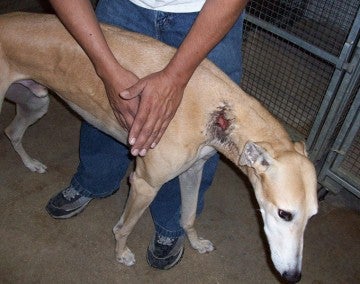How Does Greyhound Racing Work

Nobody wants to see a greyhound race that is so one-sided no other dog stands a chance. This is where the grading system comes in, which works almost like a league table, to find greyhounds as easily matched as possible and make the races more exciting and dramatic.
Greyhound racing in the United States is a sport and regular gambling activity. The sport is regulated by state or local law and the greyhound care is regulated by National Association of State of Racing Commissions and the American Greyhound Council (AGC). The AGC is jointly run by the National Greyhound Association. Greyhound racing takes place several times a week so the gap between meetings is minimal. Taking a look at previous meetings at the track over recent seasons and seeing if there was a large number of inside or outside traps winning can give you an angle into this bet. Secondly, consider playing two traps at the same meeting. Greyhound racing was a vibrant and vital part of local and state economies, wherever it existed. The revenues it generated for the towns and states were easy to assess, and required a minimum of investment. It became part of the local lore and culture. A greyhound professional was a respected and valued member of the community.
There are many different grades, A8 being the worst and OR being the best. Each of these A(number) races are over a specific “middle distance”, which differs from track to track – it will commonly be between 400 and 525 metres. There are other additional forms of racing – each of the grades are listed below.
Types Of Grade
- A8 races are run by the worst dogs at the track; they are often used for greyhounds who are near retirement, and youngsters who are learning their craft.
- The grades then continue in numbers, up to A1, which is the best grade at any particular track. Each greyhound is registered to a track, and if it races at that “home” track against an entire field of other dogs registered to that same track, then the race will be graded with a number (A1-8).
- Open Racing (OR) is a category which allows dogs registered to different tracks to compete against one another. It is generally seen as the top grade, as they must be good dogs to make the extra travel from the home track worthwhile.
- A handicap race is a one with a staggered start. This allows dogs of different abilities to race against each other. The difference in starting distance is generally calculated by recent times (each metre is worth approximately 0.08 seconds)
- Hurdles – hurdling races are uncommon, but they do happen. The fences fold down, but some tracks will host these types of race to make things a little different.
- Sprints – there are sprint grades, which are short races, and stadiums with a lot of sprinting dogs separate these into small grading categories.
- Long distance – similar to the sprinting, tracks with many long distance dogs will sometimes separate them by time. Tracks where there are not enough dogs to do this will run long distance handicap races.
How Do You Move Grade?
Each track manages their grades differently. Generally if you do well in a number of consecutive races (and win one or two) then your dog will be moved up a grade.
Conversely, if your dog is finishing outside the top three regularly, then it will likely be dropped a grade to improve its chances of winning.

Why Is Greyhound Racing Illegal
Finally, if your dog is winning one race in a grade every so often, then it will likely be kept at that grade because it is facing the right level of opposition – every dog can’t expected to win every time.